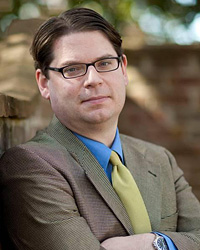
Religion News Service contributor Nicole Neroulias, recently wrote an article that begins with these words:
A recent study reports that white Americans without college degrees are dropping out of church faster than their more highly educated counterparts . . . The study, by University of Virginia sociologist W. Bradford Wilcox, found that since the 1970s, white Americans with no more than a high school diploma have been leaving the pews twice as fast as other Americans.
Wilcox’s research was presented at the annual meeting of the American Sociological Association as “No Money, No Honey, No Church: The Deinstitutionalization of Religious Life among the White Working Class.” He limited his research to white Americans because of the greater educational disparities among this group when compared to African Americans or Latino Americans. Among white Americans, Wilcox “found an across the board drop since the 1970s in those who attend religious services at least once a month:
- Among college-educated whites between the ages of 25 and 43, attendance slipped from 51 to 46 percent.
- Among moderately educated whites, attendance dropped from 50 percent to 37 percent.
- Among the least educated, attendance fell the most, from 38 percent to 23 percent.”
So What?
It seems that I am encountering more and more solid research that effectively debunks the cultural myth that those with more education are less likely to attend church. I realize that awareness of the actual data alone is not adequate for the task of changing this longstanding perception, but it is a valid and important place to begin.
Last month, I learned of sociologist Philip Schwadel’s latest research, which was published as “The Effects of Education on Americans’ Religious Practices, Beliefs, and Affiliations.” I immediately blogged about this, including his finding that “more education ‘positively affects’ religious participation and the role of religion (including devotional activities) in daily life.” My interest was such that I sought to read the actual paper. After doing so, I blogged yet again. In the second post, I included more detailed data about his findings, including his finding that “The odds of attending religious services in the last 7 days increases by 15% for each year of education beyond 7 years of education.”
- Why do you think attendance rates were highest for the most educated white Americans both in the 1970s and now?
- Why do you think the drop out rate is so much higher among the less educated (in terms of a percentage decline, the college-educated group dropped 9.8% while the least educated group dropped 39.5%)?
- What type of shift in attendance patterns do you project for each group over the next 30 years? Why? What conditions will contribute to this?